Are you ready for an exciting deep dive into Finnish culture, from Moomins to sauna etiquette and working culture to the Finnish obsession with coffee? My ambitious goal today is to cover all you need to know, including many fascinating traditions and quirks.
We could discover more about the way of life that has earned us the title of happiest people in the world several years in a row, too.
I’ve even included a few short comparisons to other countries at the end: they were edited by people who have lived in these countries and have personal experience. The comparisons come in handy for those considering a move to Finland or who work with Finns. Let’s dive in!
Table of Contents
Finnish traditions
Finnish culture is surprisingly rich and diverse, considering there are few competing influences. There are also notable minorities: Finland-Swedes, Sami, and Roma people all contribute to Finnish traditions and culture.
Ask a Finn, and they could also tell you, for example, that people from Savonia are considered talkative, humorous, relaxed, and even sneaky. Like other people around Finland, they have a distinctive dialect that can be difficult to understand.
People from the western coast, on the other hand, are considered direct. Let’s take Pori, for example. They might use a less-than-friendly greeting like “Are YOU still alive too?”. According to a local, it means, “it is great to see you looking well, energetic, and even more handsome than before”. These are just two examples.
Traditions are local too. They differ based on whether people traditionally took care of reindeer or cattle, fields or forests, were in close contact with the east or west, and many other things. One example is the word for the birch branches used in sauna, which western Finland tends to call vasta and Eastern Finland vihta.
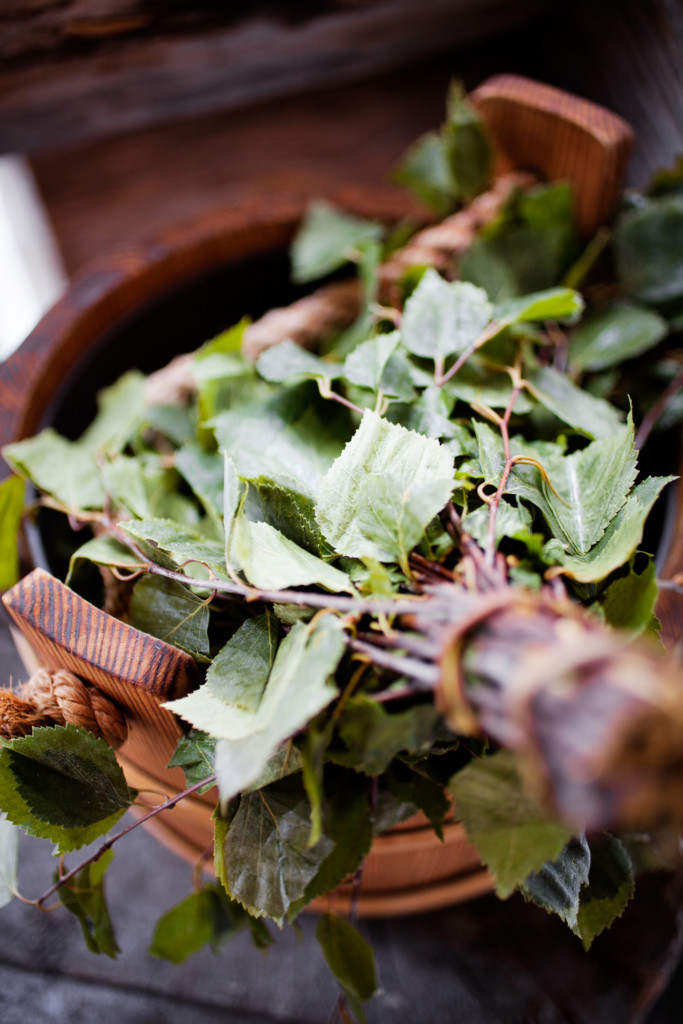
Here are some traditions that most Finns will recognize:
- Sauna bathing and jumping into the snow afterward
- The concept of sisu (psst… check out my detailed guide to sisu)
- Spending time at lakes and summer cottages
- Not needing permission to walk in the forest or pick berries
- Humppa and other Finnish dance music at a traditional barn dance (lavatanssit)
Traditional Finnish celebrations and parties
Finns celebrate at least the following internationally known holidays:
Easter (pääsiäinen)
Palm Sunday brings little witches knocking on doors to collect sweets in exchange for colorfully decorated pussy willow branches and chants that promise good luck and health for the coming year. During the Easter holidays, people enjoy lamb and a rye pudding called mämmi. It is sweet and eaten with cream and sugar, but foreigners might find it strange as it looks like a thick brown paste.
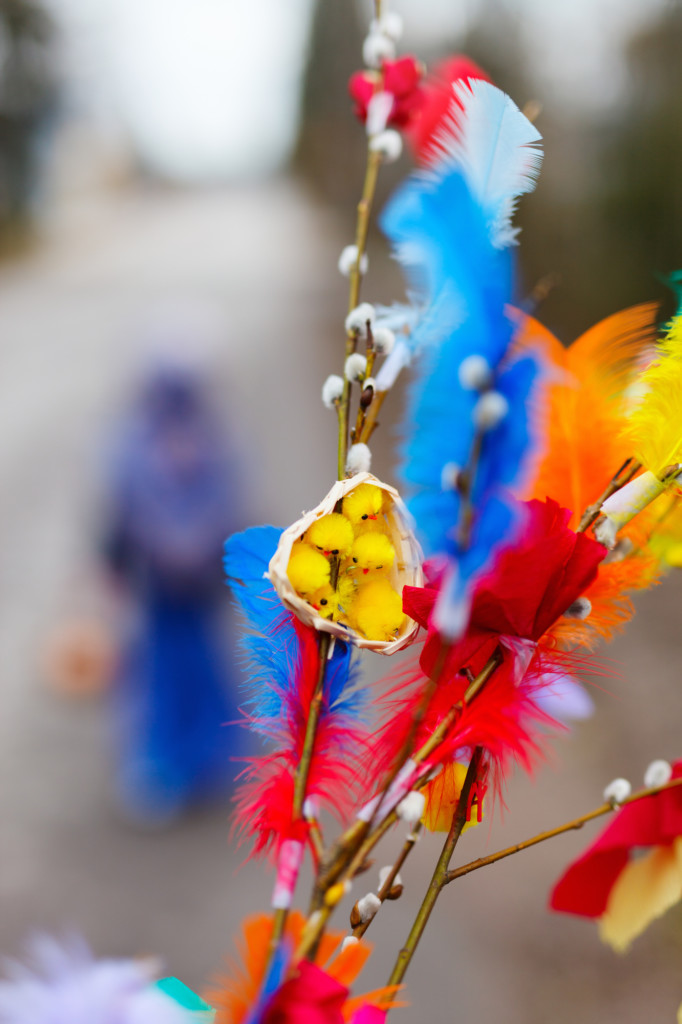
First of May (vappu)
Walpurgi’s night is the most significant event in springtime. Students and former students wear their graduation caps, and picnics are held in parks. Children enjoy the foil balloons, confetti, and sugarcoated donuts. There is a real carnival feel.
Christmas (joulu)
Christmas is one of the most important celebrations of the year in Finland. Finns believe that Santa Claus lives in Finland, and he does find time to visit many Finnish homes to deliver presents in person. Christmas sauna is also a common tradition.
There are many views of things that make the perfect Christmas dinner. Still, traditionally, Finns enjoy Christmas dishes like casseroles made of mashed carrot, potato, or rutabaga. Ham, turkey, or fish are often served too.

There are some unique celebrations you might have yet to hear about!
Valentine’s day in Finland is called Friend’s day, ystävänpäivä.
Laskiainen, our version of Shrove Tuesday or Mardi Gras, is in February and involves sledding and eating “heavy foods” like pea soup and buns filled with cream and jam, traditionally to make next year’s crop better.
Midsummer (juhannus) can be a big surprise for tourists, as even cities like Helsinki quiet down and people head over to summer cottages. Bonfires, barbecues, sauna, swimming, and juhannus magic are all part of this celebration. Midsummer takes place on a Saturday that falls between the 20th and 26th of June and celebrates the longest day of the year when the sun doesn’t set.
Finnish independence day (itsenäisyyspäivä) on 6th December is a calm celebration honoring past events. Most Finns stay home and watch official celebrations on TV.
Saint Lucy’s Day (Lucian päivä) is a celebration connected, historically, to the Swedish-speaking population in Finland. It includes the crowning of Saint Lucy, who carries a candle crown to bring light into the winter darkness.
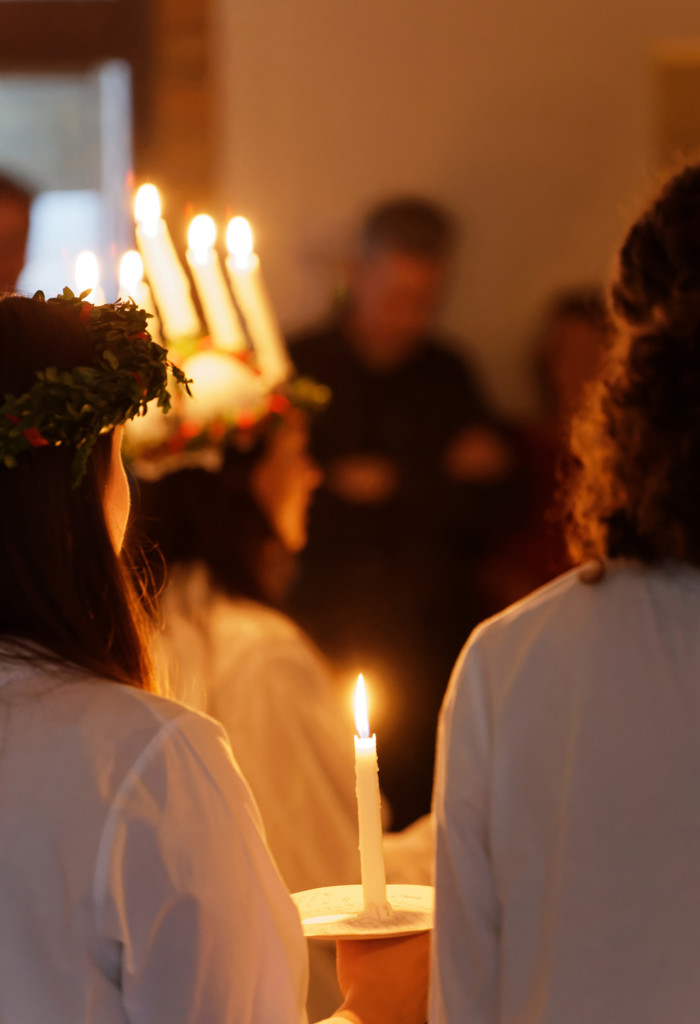
Christmas parties with colleagues and friends (Pikkujoulut, little Christmases) are more than just some regular office parties in Finland. They are often highly anticipated events, and cities fill with dressed-up crowds during the weeks before Christmas.
Name days (nimipäivä) are a Finnish tradition you might not know about. The most common Finnish first names have a name day printed on the official calendars. You can either find out or decide on a name day for most other names, including rare Finnish and foreign ones. It is common to wish a person happy name day, and they might offer you something sweet with your coffee to celebrate it. No gifts or other celebrations are usually expected.
International celebrations are more common, too, with more people moving to Finland from elsewhere and others returning from living abroad. Some examples include a Chinese New Year’s celebration in central Helsinki, Halloween events for kids, and the cherry blossom viewing festival Hanami.
Finnish sauna culture
The sauna is such an essential part of Finnish life that we have more saunas than cars: over 3 million in the country for just 5.5 million people. In theory, if we went with friends or family, like is often the case, every Finn could go to the sauna at the same time.
Finnish saunas are a place to relax and unwind, but they also play an important role in socializing and bonding with others. Sauna culture is so deeply ingrained in national identity that it’s even said that important business deals are often sealed in the sauna.

Many foreigners are surprised to find out it’s customary to go into the sauna naked. However, it is okay to wear a towel in mixed-gender saunas. Some saunas forbid swimming suits because of chemicals that can get in the air, especially if there is a pool.
The sauna has a long history in Finland, so there are many traditions around it. They include things like Christmas sauna, bridal sauna, sauna elves, and a sauna drink after the sauna. You can learn more about current-day sauna etiquette in this separate article.
Finnish food culture
Finnish food has not made it as a global phenomenon, but it is often wonderful hearty comfort food that keeps you full and warm on those cold winter days. Where you do find a Finnish cafe or restaurant outside Finland, it often serves some of these things:
- Cured or smoked salmon, often with rye bread
- Karelian pies: savory pastries filled with rice porridge or mashed potatoes
- Cinnamon buns
- Salmon soup
There are, of course, many more classic dishes like Karelian stew (karjalanpaisti) and blueberry pie you should definitely try if you get the chance. In fact, if you find this interesting, you should have a look at my article on 50+ Finnish foods and dishes from weird to divine.
An interesting fact about Finnish food culture is that Finns eat dinner early. A typical working and school day might start at 8 am, so 11 am is a standard lunchtime after an early breakfast.
While Finns are adapting to eating later, the evening meal can be served as early as 5 pm. When it comes to restaurants, many Finns will book a table for later than that, but food is usually not served after 9-10 pm.
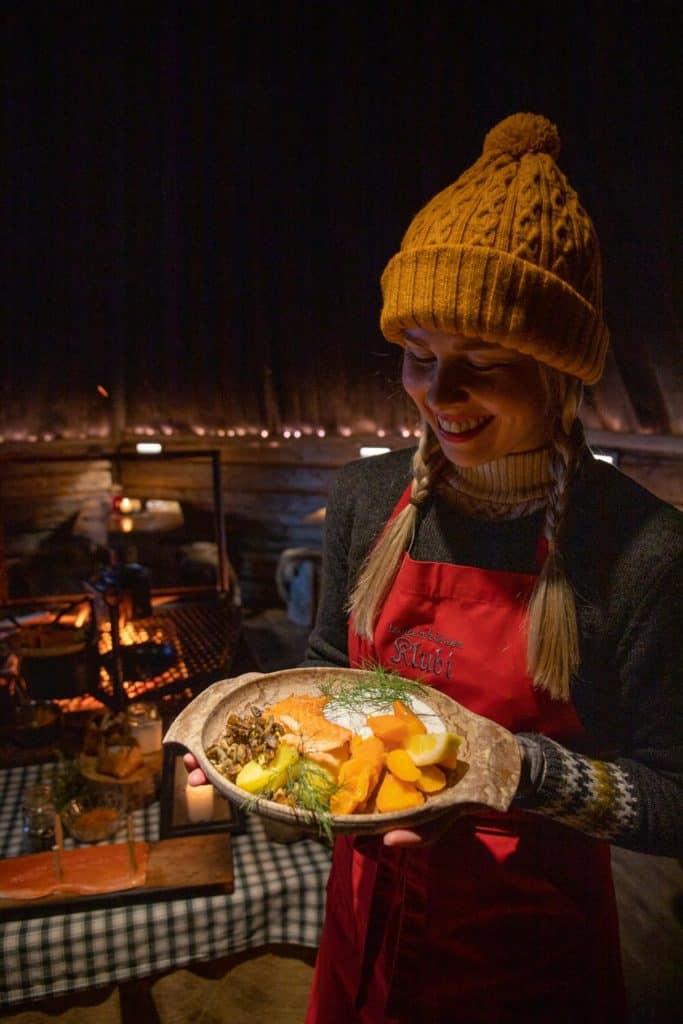
In many central European countries, there is a thin line between bars that serve snacks and even food and restaurants where you can dine and stay for a drink after or before your meal. It is still quite common in Finland to have dine-in restaurants where you finish your glasses after dinner and leave. Bars often serve no snacks or food.
Opening times can also tell you what to expect: bars often stay open past midnight, some until 4 am. Food carts called sausage kiosks (nakkikioski or snägäri) open after most restaurants close to feed people on their way home.
Finnish drinking culture
In everyday life, the most common drinks Finns have with a meal are water or milk. Alcohol, like wine with dinner, is rarely part of routines.
Finnish drinking culture still typically focuses on alcohol being an essential part of celebrating and having fun. Although Finland doesn’t make it to the top 10 for consumption per capita, the country has a reputation for drinking a lot of alcohol. This is despite Finland having the highest prices for alcohol in the EU.
Most alcohol (wine, spirits, etc.) can only be bought from the state-owned store, Alko. It has more limited opening hours than grocery stores, which can sell lower percentage drinks like beer and cider from 9 am to 9 pm. Restaurants and bars can serve alcoholic drinks after 9 pm, too, and operate in a similar way as in any other European country.
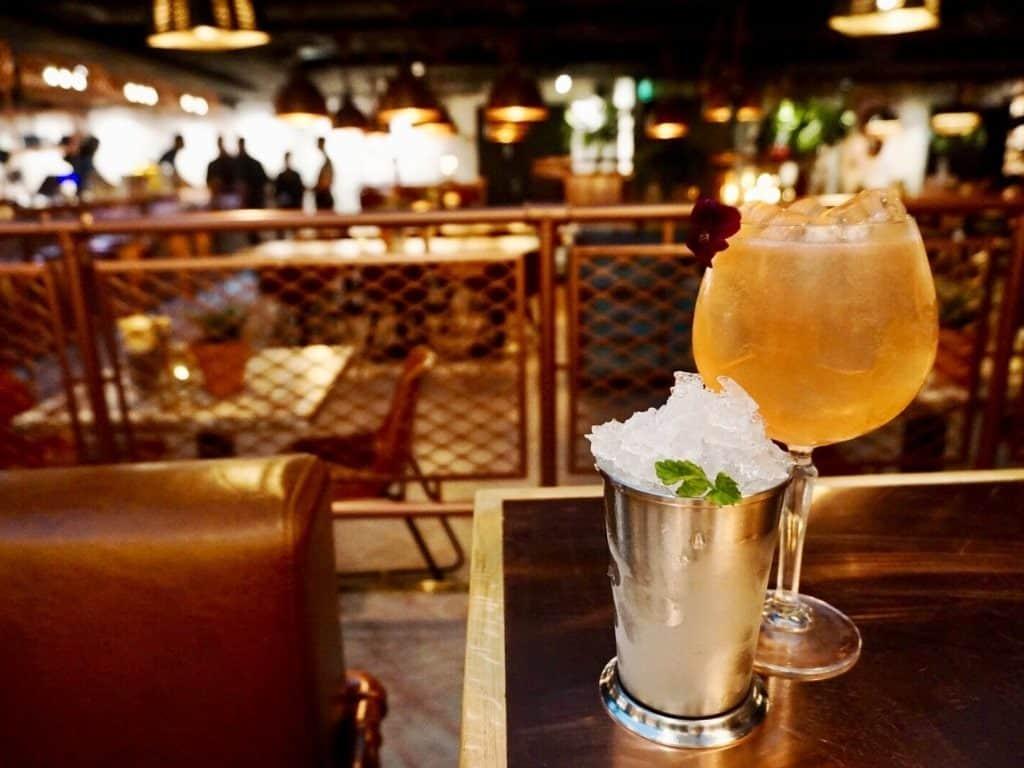
Finland is also home to some unique alcoholic beverages, such as salmiakki koskenkorva, a salty licorice-flavored vodka, and the grapefruit drink Lonkero. If you are interested in particularly Finnish drinks (non-alcoholic and alcoholic), I have written more about unique and unexpected Finnish drinks here.
Almost one in three young adults doesn’t drink alcohol, and this trend has contributed to more non-alcoholic beers and ciders hitting the shelves.
Finnish coffee culture
Finns and coffee are inseparable, with Finns consuming the most coffee per capita in the world. One person consumes, on average, over 10 kg every year. Most of this coffee is enjoyed as light roast filter coffee. It is common for people to prefer slightly different strengths, leading to conversations about who makes good coffee.
Finns have coffee mostly at home or at work. We refer to breaks at work as coffee breaks, whether we have coffee or not. If you visit someone’s house in Finland, they will most likely offer you a cup of coffee.
Finns even have names for different cups of coffee: aamukahvi for morning coffee, päiväkahvi for afternoon coffee, and santsikuppi for a second cup. When a colleague leaves, we have farewell coffee (läksiäiskahvit), and when someone wins a medal in a sports competition, of course mitalikahvit, medal coffee, is in order.

Finnish communication style
Finnish communication style is known for being direct, honest, and to the point. Finns value honesty and authenticity and often say what they mean without sugarcoating it. Finns are okay with having a long pause in the conversation if there is nothing to say.
This can come across as blunt or rude to outsiders, but it’s important to understand that Finns value efficiency and clarity in communication. Small talk is rare in Finnish culture, and conversations tend to be focused on practical matters rather than personal details.
The no-small talk rule applies to “how are you?” too. Finns can feel there is only a point in asking such questions if you are interested in the answer. Don’t be surprised if you get a more detailed reply. One thing you can always bring up, though, is the weather. This universally easy topic is something Finns love to discuss too.
Finnish dating culture
You can use all the usual dating apps in Finland. Other tried and tested ways to meet Finns might sound obvious, but they work here too: go to events, take up new hobbies, and meet friends of friends. There are also events like speed dating available in bigger cities.

Here are some cultural tips for when you go on a date with a Finn:
- You can probably get to know a little bit about them through social media profiles
- Be on time or let your date know you’re running late
- Quietness can be normal – your date might not know about awkward silence, they are just comfortable with you
- Remember: Finns are honest, and your date saying something negative about the date (food, movie, music, and so on) is not a reflection of what they think of you
- Politeness and smiles will win most Finns over
- Split the bill if you want to, it’s okay in Finland
- Don’t tell a Finn you’re going to do something if you are just being polite (like “we should have coffee soon”)
Here is a fun article on dating culture in Finland if you want to know more.
Finnish work culture
In professional communication, it is good to know that Finnish workplaces don’t have a very strict hierarchy, and everyone’s views tend to be seen as equally important. Finns also don’t use titles; it is usually acceptable to call people by their first names. Office wear is often smart casual or even casual, but it depends on the office.
Finns take work-life balance seriously, and working hours are followed a lot more than in many other countries: it is not unusual for everyone to finish work when the office hours end. It is not always seen as a good thing to do overtime either, as your tasks are supposed to fit into the working day.
While work is a way to fund your life outside work, at the same time, Finnish employees tend to take responsibility for their tasks. Managers can show their trust by letting their team handle everything themselves and expect to be told if there are problems the employees can’t solve.
It is good to know that when professionals are on holiday, it is considered rude to contact them about work and you might simply get an automatic e-mail message until they are back in the office. Finnish offices practically shut down for a few weeks in July at the peak of the holiday season.
Finns have long holidays and may take several weeks off in the summer and a few weeks around Christmas, for example. Maternity and parental leave are also longer than in most other countries.
Finnish business culture
Finns are becoming much better at networking in professional life, and you’ll find most people on LinkedIn. Many offices have English as their official language and diverse multinational teams are not uncommon.

You can expect Finnish business culture to be similar to most other European countries when you first contact them: you can find phone numbers and e-mails on websites, and there are no gatekeepers. You can e-mail people directly, usually even CEOs. However, they may be too busy to reply, depending on what you contact them about.
In negotiations, Finns like to go straight to the point and problem-solve. Everyone gets to speak, but it is considered rude to simply make sure you get attention in a meeting. It is best to only talk when you can contribute something concrete. People will voice their opinions openly and might give a strict no if they think an idea won’t work.
Finnish pop culture
In this part of the blog, I will give you an idea of what Finns are listening to, watching, and reading. If you want to know more about things to look up for yourself, this blog on What Finland is known for gives even more ideas.
Finnish TV
Finns use on average 2 hours a day watching television. You might be surprised that many American, British, German, and other TV series and movies run on Finnish TV. Instead of dubbing, Finns are used to subtitles. Only series and films for small children are dubbed.
There are also Finnish versions of series like
- Who Wants to Be a Millionaire
- Survivor
- The Bachelor
- Big Brother
- Biggest Loser
- Love it Or List It
- News of the Week
- American Idol
- X-Factor
- Talent
- The Voice
- Masked Singer
- Temptation Island
- Farmer Wants a Wife
- The Great British Bake Off (we called it All of Finland bakes)
- Masterchef
and so on. At the same time, we also get reruns of the American, British, and Australian versions of these series on TV.
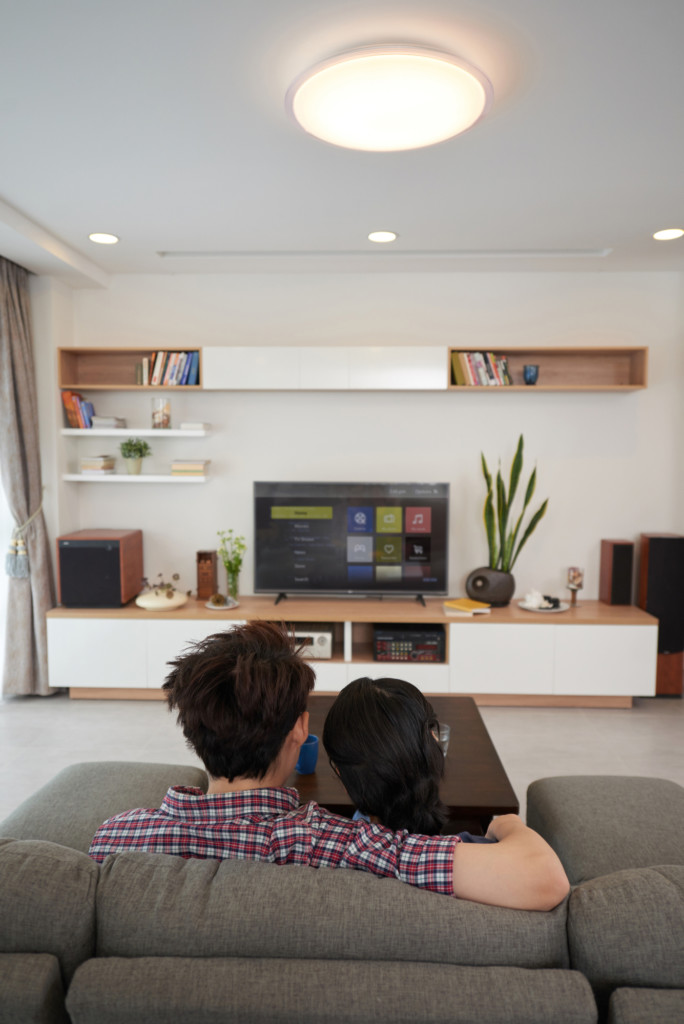
Other popular programs include
- the long-running soap opera Salatut elämät (Secret lives) about people living in the same apartment building
- local talk shows
- stand up comedy
- news and current affairs programs
- Huvila & Huussi (Villa & Outhouse) where a team fixes up summer cottages
- Suomen kaunein koti (Finland’s most beautiful home)
- Koti koiralle (Home for a dog) where the team find dogs new homes
- Pitääkö olla huolissaan (Should I worry) where a panel listens to viewers’ everyday concerns and provides funny answers
and many others.
Foreign series run regularly or are constantly on as reruns, including Emmerdale, The Bold and the Beautiful, Grey’s Anatomy, Friends, Two and a Half Men, Inspector Morse, The Simpsons, QI, Top Gear, Great Designs, and many others.
Since most of the newest series are not available anywhere else, Finns also use many streaming services.
Local streaming services are available from Elisa, MTV, and YLE. Popular Finnish series available in English on Netflix are mostly crime dramas or Nordic Noir like Bordertown (Sorjonen) and Deadwind (Karppi).
Finnish movies
The Finnish movie industry produces around 30 movies each year, and a couple of those usually make it to international markets. In 2022, one Finnish film was in the top 5 most watched for the year and 6 in the top 20.
Hollywood blockbusters and other international movies fill the seats in movie theatres the rest of the time. Foreign films have Finnish subtitles and original audio, except for children’s movies and movies with Finnish audio.
Popular Finnish literature
Finns aged 15-69 years old read books for 20 minutes a day, on average. This is not a lot compared to the hours they spend on their devices, but the Finnish free library system with a library in every city and most smaller towns gives everyone the chance to get into reading.

The most popular genres of books in Finland include
- children’s books
- crime and thriller novels from Finnish authors like Ilkka Remes as well as international authors
- other fiction dominated by Finnish authors
- international best sellers
- biographies and commentary from Finnish experts, celebrities, and authority figures
Several services offer Finnish and international audiobooks in Finland. Over a million Finns have listened to audiobooks, and over 93% of the audiobooks listened to in Finland are in Finnish. On average, Finns listen to two audiobooks a month and 65% of that is fiction, with thrillers and crime novels at the top of the list.
Finnish popular music
Current music boards in Finland have been dominated by local rap music for some time. However, the core of Finnish popular music is still built around the genres lovingly called suomirock (Finland rock) and suomipop (Finland pop).
A little older style of music is called iskelmä. This type of music tends to be a little more traditional than modern pop. It includes many international hits that were translated into Finnish.
Metal music is super popular in Finland, too, and sometimes called “hevi”. There are more heavy metal bands per capita here than anywhere in the world and Finns also listen to heavy metal with albums making it to the top of the list.
To hear over 150 songs that fall into one of these categories, check out my “Completely Finnish” playlist on Spotify! It contains classics and newer music that has been popular over the last few years.
Moomins
If you spend a bit of time in Finland, it won’t be long before someone offers you coffee in a Moomin mug. This might seem weird to foreign adults, but Moomins are part of our national identity.
Moomin books and comics were written and drawn by Tove Jansson in the 1940s and 1950s. In the 1990s a Japanese animation studio drew the stories into a series; the rest is history. Moomins took over the world and became part of Finnish childhood memories.

You can find Moomins everywhere in Finland, from mugs to magnets, toys, books, kitchenware, clothes, towels, and duvet cover sets. If you are not yet familiar with them, I recommend my article on 10 Life Lessons Moomin Characters Have Taught Me.
Arts in Finland
Often called simply culture or sometimes the bit snobbish “high culture”, arts like classical music, ballet, opera, performance art, theatre, literature, dance, artwork, and so on are considered essential for everyone to learn about in Finland.
There are 155 museums, 59 theaters, and 29 orchestras in Finland.
No one gets through their education without being introduced to these things and their importance in forming the Finnish cultural identity. Some parts, like Finlandia by Sibelius and Kalevala-themed paintings by Akseli Gallen-Kallela, are so well known by Finns that they could belong in pop culture rather than a separate arts category.
Recent studies suggest that fewer people continue actively exploring arts later in life. People who go to other events are more likely to also go to ballet, opera, theatre, or art exhibitions.
While some choose to dress up for events like these, there is also a feeling that art belongs to everyone in Finland, so you can dress casually.
How does Finnish culture compare to…
Finally, I asked some of my friends to share their experiences living abroad to provide some idea of how the Finnish culture compares to others. This overview can be helpful if you’re trying to understand what makes Finland unique. However, it goes without saying that culture and the people from that cultural background are never “always” one thing or the other.

Finnish culture vs. American culture
Finnish and American cultures are very close to each other in many ways, as individuals value independence, and there isn’t a lot of hierarchy. Growing up watching American TV and movies also makes US culture feel closer to us than the Finnish culture feels to Americans.
Here are some of the differences we have noticed:
Importance of work-life balance: Finns work to make a living so they can do things in their free time and everyone understands you work better when you have time off sometimes. US colleagues often have much less vacation time and longer days. Compared to the American working culture, there is less competition between individuals.
Support network: American culture emphasizes the individual’s responsibility in everything they do and the freedom to take their own path. Finns know they always have a support network to fall back on if things get temporarily tough, but it comes with responsibilities.
Polite and open: Americans are generally more polite and open. Being relaxed around people is something Finns can learn from the US.
Finnish culture vs. British culture
Finnish and British cultures are also quite similar and Brits will often find it very easy to be liked in Finland because politeness works very well with the Finns. There is more hierarchy in British society, but practices at workplaces and between friends are very similar to Finland.
Formality: To exaggerate a little, to Finns, being formal means using a different word for hello and goodbye, not shortening words and sticking to the point. For the British, there are pleases, thank yous, and expressions that a Finn can only learn through experience, and that’s only the language.
Punctuality and perfectionism: The British rely a lot on tradition and on just making things work despite the circumstances. The Finns, compared to this, are a little bit too perfectionist. We might not say it, but it annoys us that someone is late or worse still, doesn’t let us know for hours they are on their way! Things like someone using an old book to look up details that clearly should be on the computer makes no sense to us either.
Saying what you mean: The British are very good at saying things without actually saying them. This is a Finnish nightmare, as we are used to honest and direct communication.
Finnish culture vs. Latino culture
At first glance, there are quite a few differences between the Finnish and Hispanic cultures. Still, many Finns absolutely fall in love with it. A lot of it could be because, despite the apparent differences, there are similar underlying values, including shared responsibility, respect, and accountability.
Expressive: Openness and expressiveness are not the first things that come to mind about Finnish culture. It might be why some Finns absolutely fall in love with latino culture and feel more at home where they can express themselves more.
Community: Latino culture focuses on family, community, and relationships. Finnish culture is more individualistic.
Negative emotions and things: Finns are sincere when it comes to expressing what they think, whether it is positive or negative. Hispanic culture focuses on the positive side of things, happiness, and personal satisfaction. Both come in handy in different situations!
How to connect with the finns
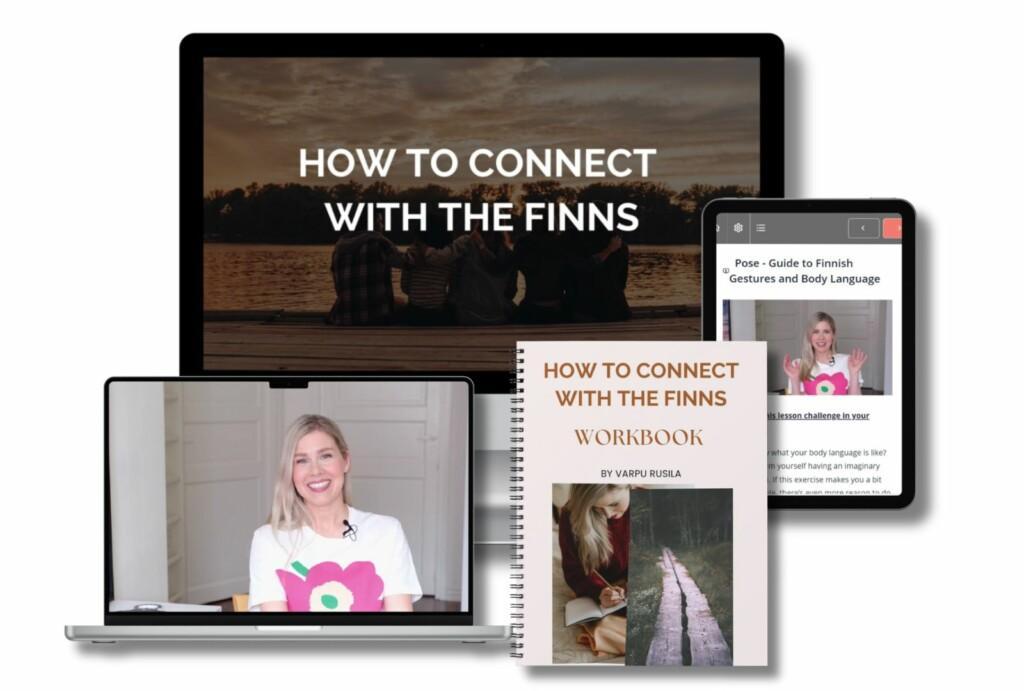
Understand Finns even better and build relationships with confidence. ⭐⭐⭐⭐⭐
Finnish culture vs. Russian culture
As neighbors, Finns and Russians have a turbulent past but share a lot in common. They include love of sauna, called “banya/banja” in Russian, quietness, and many words in the Finnish vocabulary like ikkuna for window, kapakka for bar, kasku for joke or legend, leima for stamp, lusikka for spoon, porkkana for carrot, risti for cross and so on.
Friendship: Loyal, long-term friendships, respected in all parts of life, are part of Russian culture. Personal networks are very important and giving and receiving favors is common. Even if Finns form lifelong friendships too, the networks are less important in everyday life.
Making plans: Finns are used to agreeing on a meeting time and place and then, even if it was agreed some time ago, show up on time. In Russia, things can be more flexible. Times are rarely agreed well in advance, so it is good to confirm them closer to the time. Some might still make a call to say they are on their way too, to make sure there will be someone to meet them.
Names: In Finland, you can almost always call people by their first name. Russians use Mr and Mrs and surnames a lot more, and also name and patronymic, for example, Ivan Nikolaevich.
Finnish culture vs. Asian and Chinese culture
Finns find it easy to appreciate the politeness and quietness that often characterize work meetings in Asia. At the same time, the lively and even loud social occasions between friends can put some Finns off.
Especially when talking about cultures with Chinese influences, Finns can unknowingly cause chaos in social situations and meetings. A lot of the differences between Asian and Finnish cultures are subtle, which does not make them easy on the Finn, who is used to talking in a direct and honest way.
Harmony: It is difficult to overestimate how important social harmony is in Chinese culture. For example, calling out a mistake someone made in order to fix things should not be done during a meeting but afterward in private.
Finns don’t usually understand this concept because it is good for everyone to fix things as soon as possible, and they are not placing blame on the person who made a mistake. On the other hand, our own form of harmony is built upon people following rules and not jumping queues or taking shortcuts like that for their own interest.
Traditions: Finns are not very long-term oriented, and much emphasis is placed on science and individual-based beliefs about wellbeing rather than concepts learned over the centuries. It can feel peculiar if the clinic we visit to get a broken arm treated has a department for traditional Chinese medicine, for example. There are also no rituals for ancestors or any concept that past lives affect current-day matters.
Sorry: In Chinese cultures, saying sorry usually means you accept responsibility. People are less inclined to say sorry in some situations and more eager to do so the first thing in others. When a Finn apologises, it is usually because they feel it is their fault but also are genuinely sorry or feel they caused an inconvenience. With that said, Finns react well to someone else apologising and recognize that feeling of being acknowledged.
Even with all that, there is, of course, more to Finnish culture than this. Let me know in the comments what part you would like me to focus on next or if you have any questions or comments. Any thoughts on how Finnish culture compares to other cultures I did not cover? Let me know in the comments.
Here are some other articles you might enjoy reading next:
How to Prepare Yourself For Culture Shock in Finland
13 Brilliant Podcasts about Finland and Other Ways to Learn Finnish Culture
Moving to Finland: Living in the 20 Largest Cities
FinNISH CONNECTION COLLECTION 🇫🇮
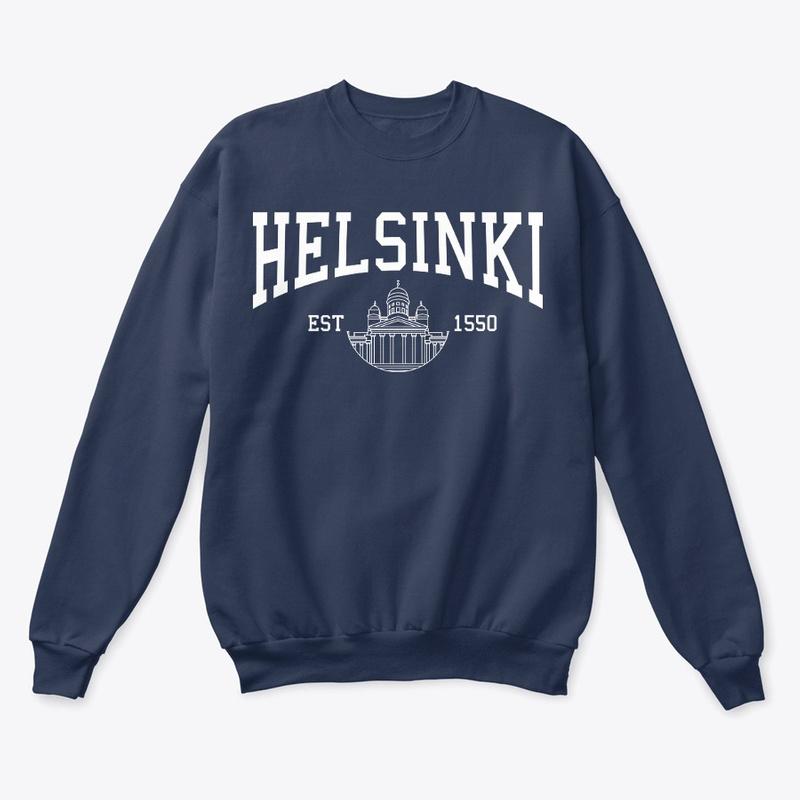
Finland-themed sweaters and accessories made-to-order. 🧡 Worldwide shipping.
References:
https://www.businessfinland.fi/ajankohtaista/blogit/2021/valta-sudenkuopat-ja-onnistu-saunapalvelussa#:~:text=Suomessa%20on%20arvioitu%20olevan%20yli,on%20enemm%C3%A4n%20saunoja%20kuin%20henkil%C3%B6autoja.
https://www.iltalehti.fi/tv-ja-leffat/a/201708162200247629
https://www.kustantajat.fi/media/bestsellerit-verkkoon-2022.pdf
https://www.lansivayla.fi/paikalliset/4404022
https://yle.fi/aihe/a/20-10001866

